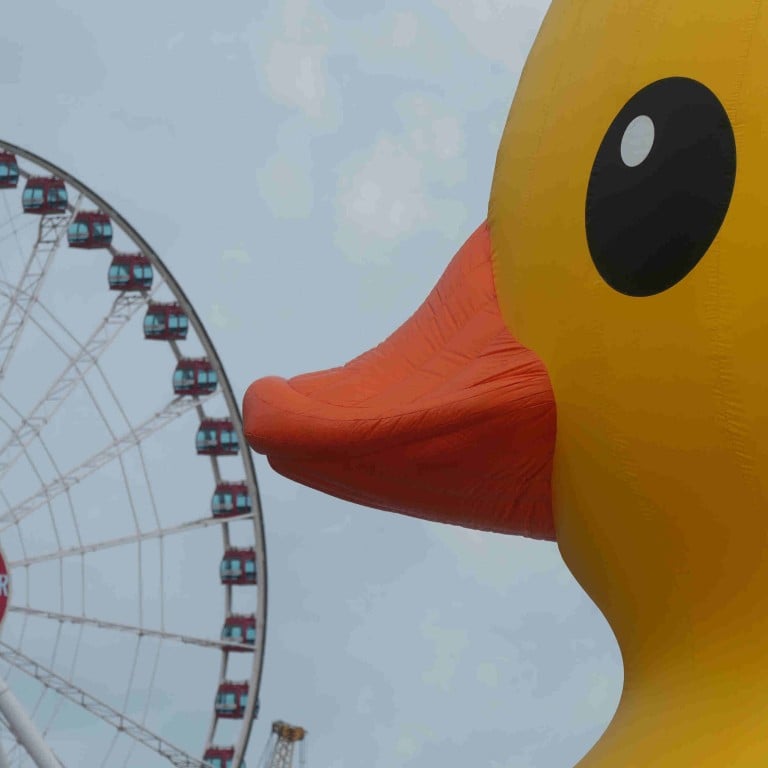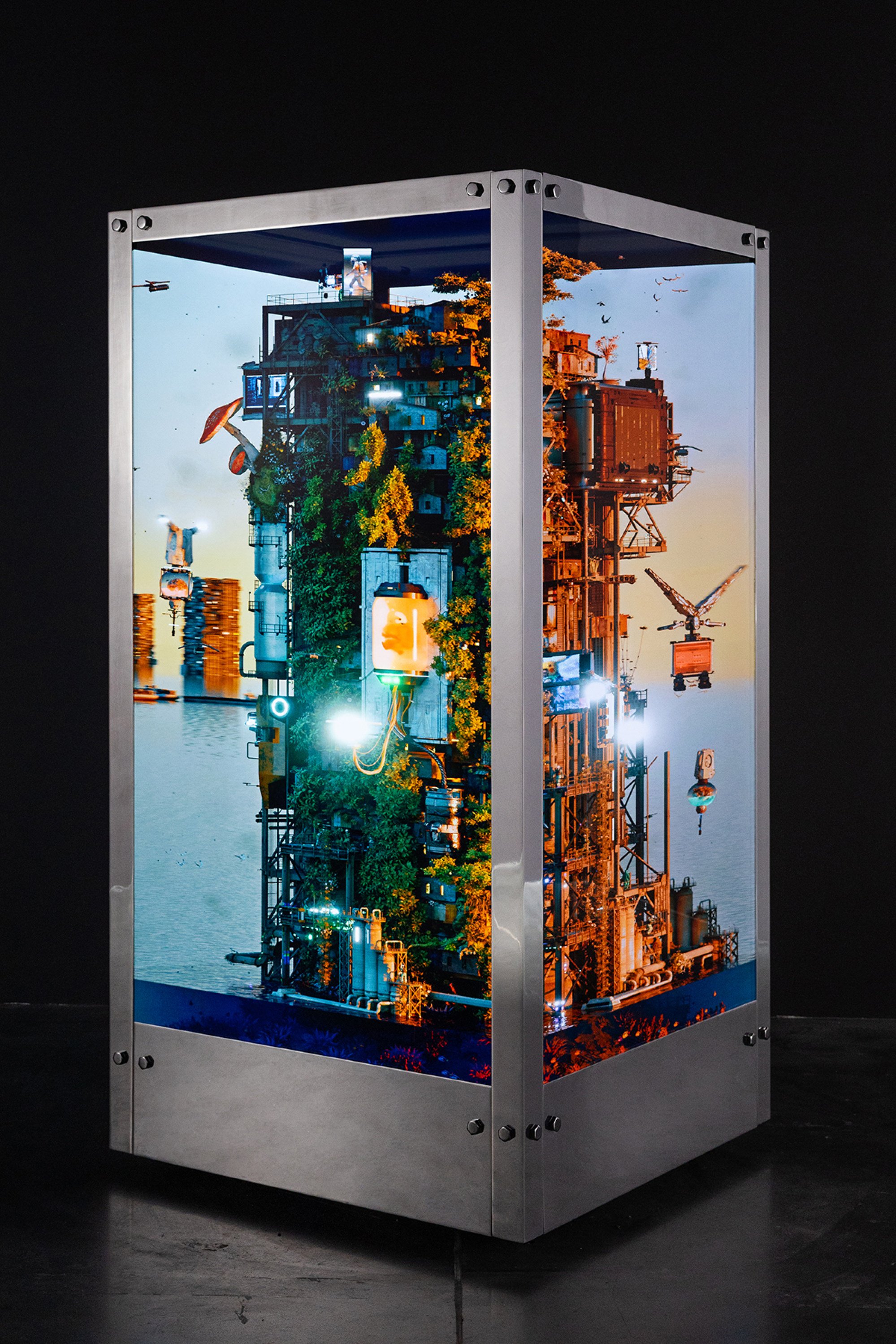Inside Hong Kong’s sudden hunger for art and culture in 2023: from record auction sales to TeamLab’s first installation in the city and those lovable giant rubber ducks

After a long and drawn-out pandemic period, talk of Hong Kong’s resurgence has ballooned into a full-fledged choral celebration, with upbeat voices echoing across several of the city’s business sectors.
And they could not come soon enough: the city’s economy contracted by 6.1 per cent in 2020, according to a report by the Hong Kong Monetary Authority.
But better forecasts are finally on the horizon, and the International Monetary Foundation predicts GDP growth of up to 3. 5 per cent for 2023-24. In few industries has this bounce back been more evident than in the art world.

In 2022, Sotheby’s Hong Kong sold US$1.1 billion of art and luxury across all categories – matching a surprise pandemic-era record set a year earlier.
“So that gives you a pretty clear record of the market overall,” said Alex Branczik, the auction house’s senior director and chairman of modern and contemporary art for Asia. “Despite Covid – and maybe even in some ways because of the pandemic – 2022 was a record year for the company Given that the first half of that year the borders were closed, and the first quarter in particular was very difficult, I think it shows a real resilience in our market.”

This year marks Sotheby’s 50th in operation in Asia, and with it a pivot to a more global landscape.
“If you look back 10 years to 2013 at the make-up of our 40th anniversary sale, there wasn’t a single Western artist. It was all Asian modern and Asian contemporary – both Chinese modern and the big name Chinese contemporary artists of the 20th century,” added Branczik. “We sold Zeng Fanzhi’s Last Supper for over US$20 million.”
But there has been a shift in the last decade, he continued, pointing towards an increasing number of Asian collectors following more global trends.

At Art Basel Hong Kong, the works are primarily going to Asian collectors and Asian institutions, according to fair director Angelle Siyang-Le.
“That is what we would like to see for our international galleries – what they want to do in Asia is to really find great collectors and collections and to place their artworks and artists in our region,” she added. “That’s part of my way of measuring success.”

Hosted this March – in full for the first time in four years – the 2023 fair surpassed her expectations, Siyang-Le admitted. Art Basel 2023 featured 177 galleries from 31 countries and territories, an impressive feat considering that a seven-day quarantine period was still in place while applications were being submitted. With an attendance of around 86,000 across the five days, the 2023 edition of Art Basel showed that Hong Kong’s vitality is back in full force, she said.
Sales from this year’s fair also add weight to Siyang-Le’s sentiments. Galleries across the board reported strong takings, including LGDR which sold a kinetic sculpture, S.2122, by digital artist Beeple at an asking price of US$9 million. And at Kwai Fung Hin Art Gallery an ink painting by Li Huayi and an oil on canvas work from Lalan each sold for between US$5 million and US$6 million.

But sales are not the only factor driving the resurgence of Hong Kong’s cultural climate. After so many years of disruption, the on-the-ground response to the other events that make up the fringe Hong Kong art week was palpable.
“[Art week] was an example of where it was in everybody’s best interests to put their best foot forward,” said Branczik. “It was less about competing with one another and all [about showing] Hong Kong at its best.”
Away from that crucial week in late March, a reignition in public interest in art has been seen across the city. The recent return of Florentijn Hofman’s large scale public art installation is one of many examples. Ten years after one of the Dutch artist’s Insta-spiring giant yellow ducks first landed in the city, two more swam in Victoria Harbour earlier this month – as the work Double Ducks – floating 18 metres tall and towering over the city’s iconic Star Ferry vessels.

Meanwhile, the long-awaited opening of TeamLab Future Park – slated for early July – is another key example. The digital arts collective specialises in immersive experiences that allow visitors to interact with spaces as they are transformed through digital technologies.
Hong Kong will join the Japanese collective’s international roster of exhibitions, with a 10,000 sq ft space at MegaBox in Kowloon Bay transformed into a multisensory journey – a crowd-pleasing addition to Hong Kong’s increasingly collective cultural landscape.
“Future Park is an educational project based on the concept of collaborative creation,” said founder Toshiyuki Inoko.

“We believe that TeamLab’s art has the power to transform the relationships between people in the same space into something more positive. This power can transform creative activities, which tend to be individual, into co-creative activities with others.”
Digital art also played a prominent role in Art Basel 2023 Hong Kong, too – a trend that is apparently here to stay.
“This isn’t going to be a Covid phenomenon,” added Siyang-Le. “Digital elements are going to grow. Moving forward [they] will be our focus, especially in Asia.”

As to whether Hong Kong’s status as the region’s cultural powerhouse has been maintained – or perhaps returned post-pandemic – Siyang-Le believes this is no longer in question. “The key collectors, art patrons, curators and artists returned to the city in a heartbeat. This is a great indicator of how many people had been waiting to see what Hong Kong [would be] like after the pandemic,” she said.
“The landscape has really grown, and grown healthily. [Hong Kong] is growing towards a world-class, comprehensive, healthy art ecosystem. And that is the base – a very solid foundation for us – to operate our business in Asia.”

- The arrival of Florentijn Hofman’s Insta-spiring Double Ducks in Victoria Harbour ignited Hongkongers’ lust for culture – and the TeamLab Future Park landing at Kowloon Bay’s MegaBox is turning up the heat
- There’s money to be made, too – Sotheby’s Hong Kong sold a record US$1.1 billion of art and luxury in 2022, and Art Basel enjoyed stronger-than-expected sales on its full physical return